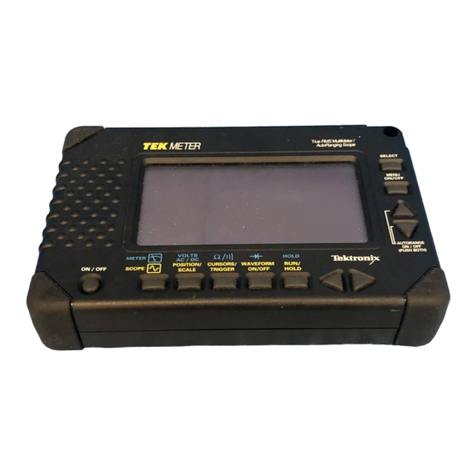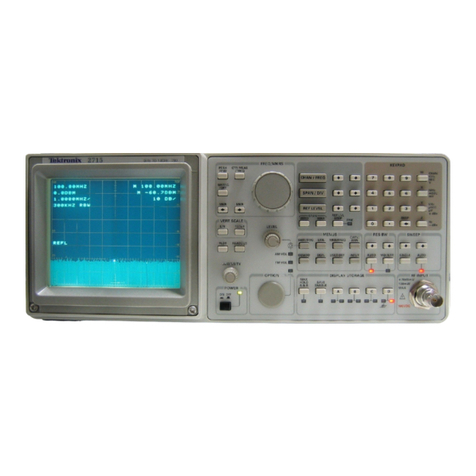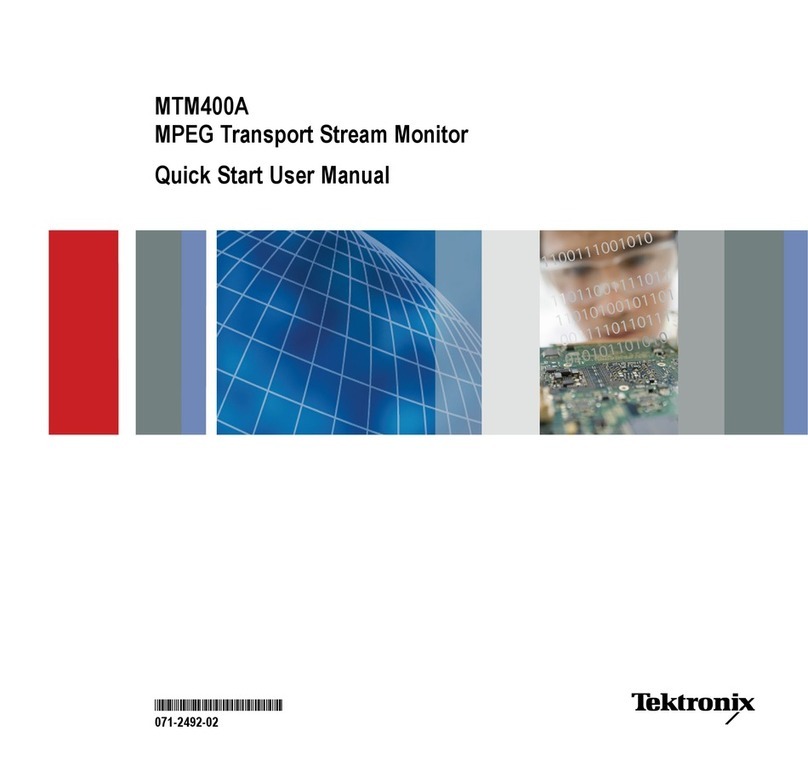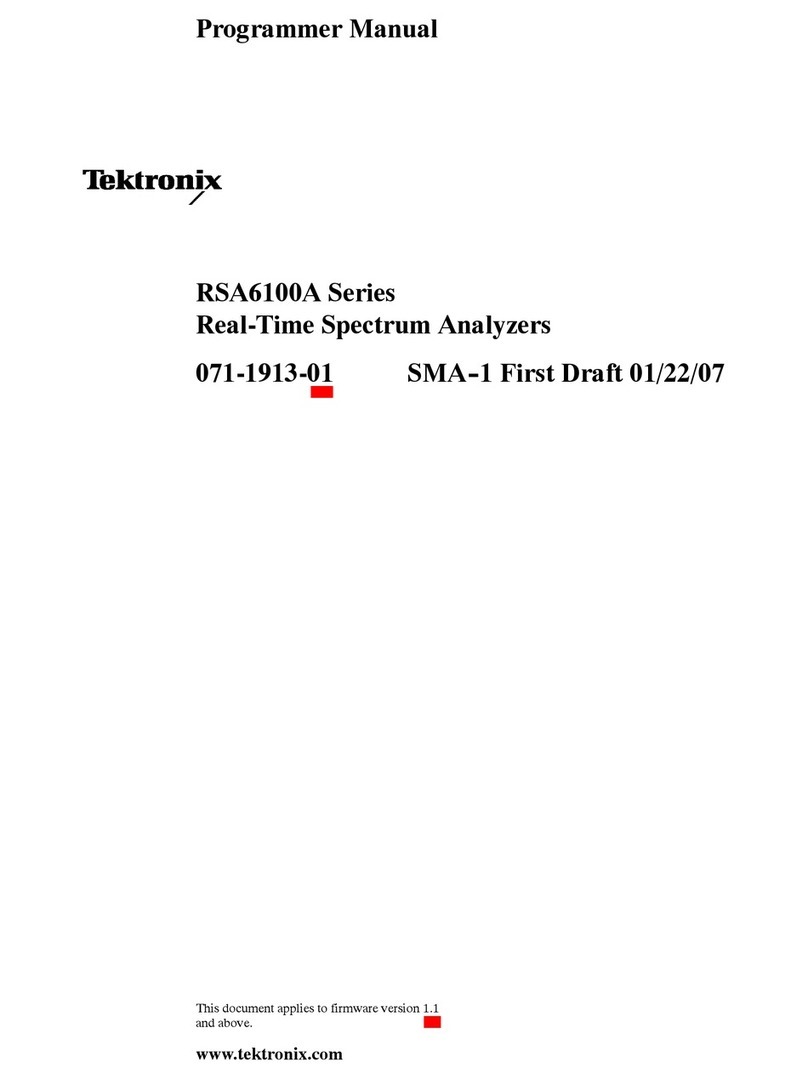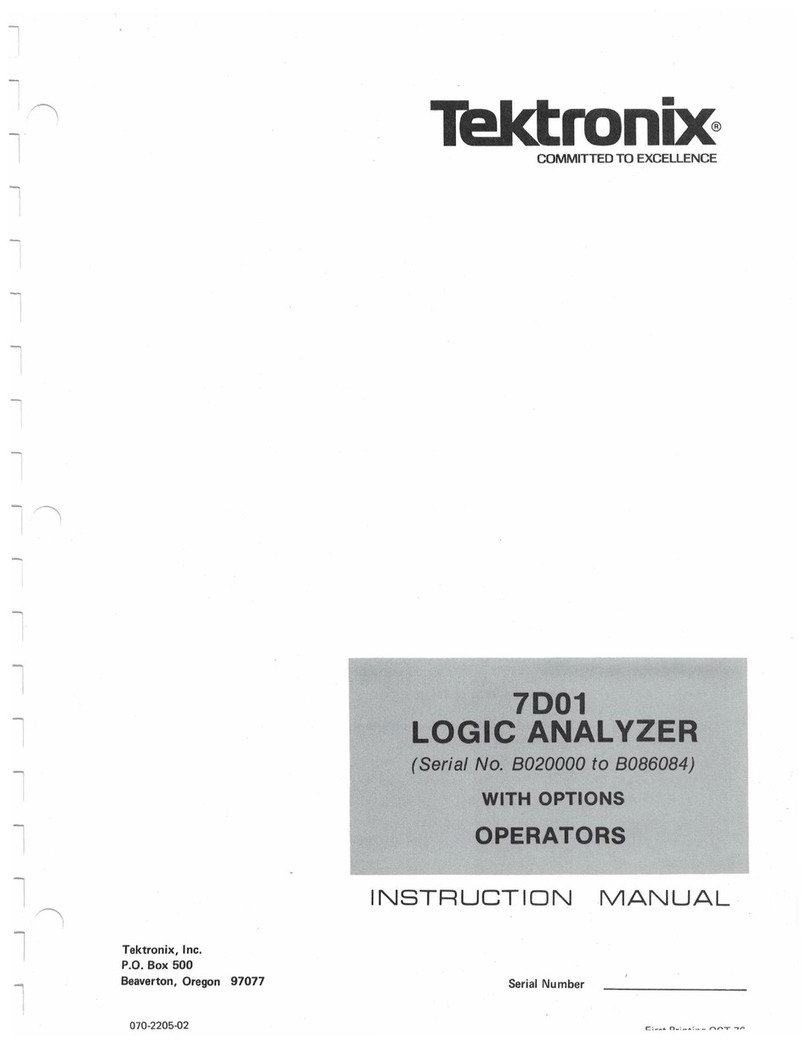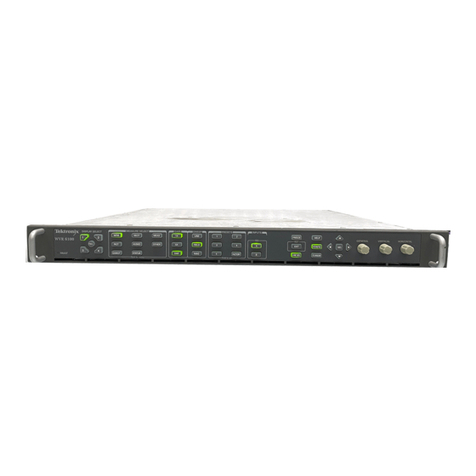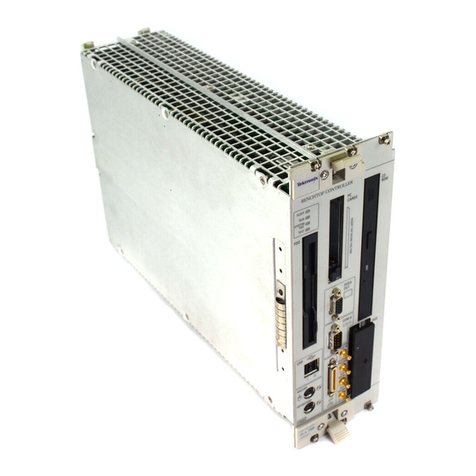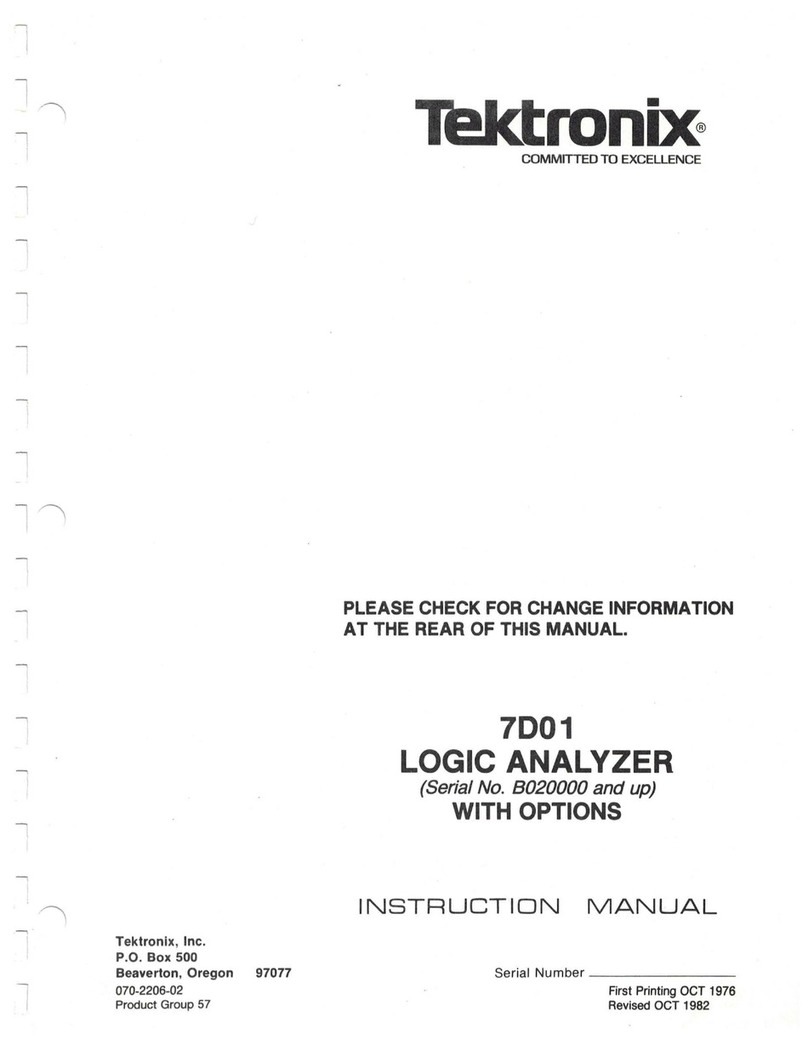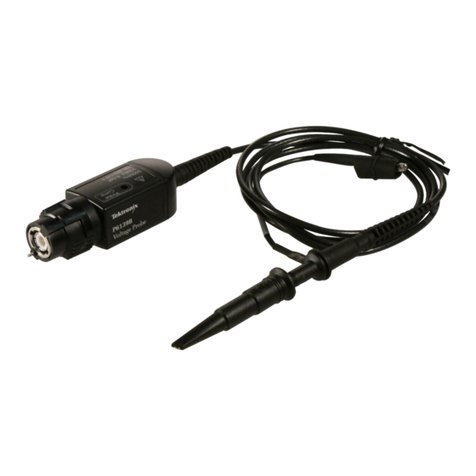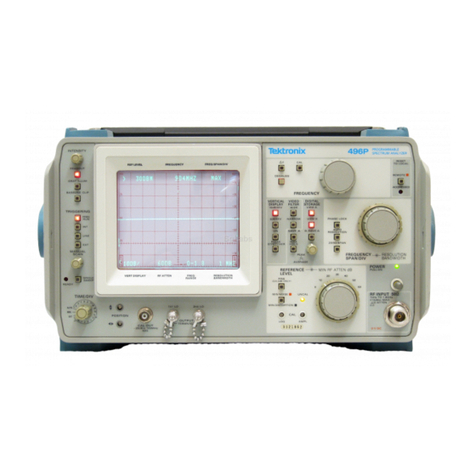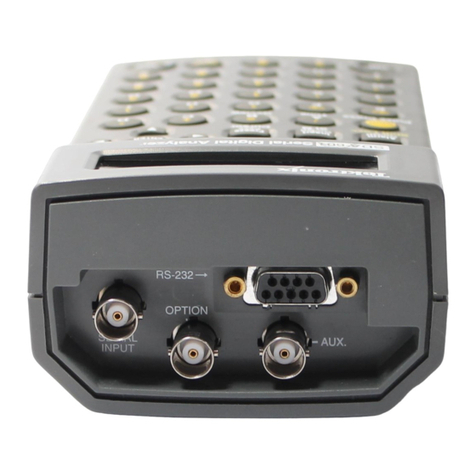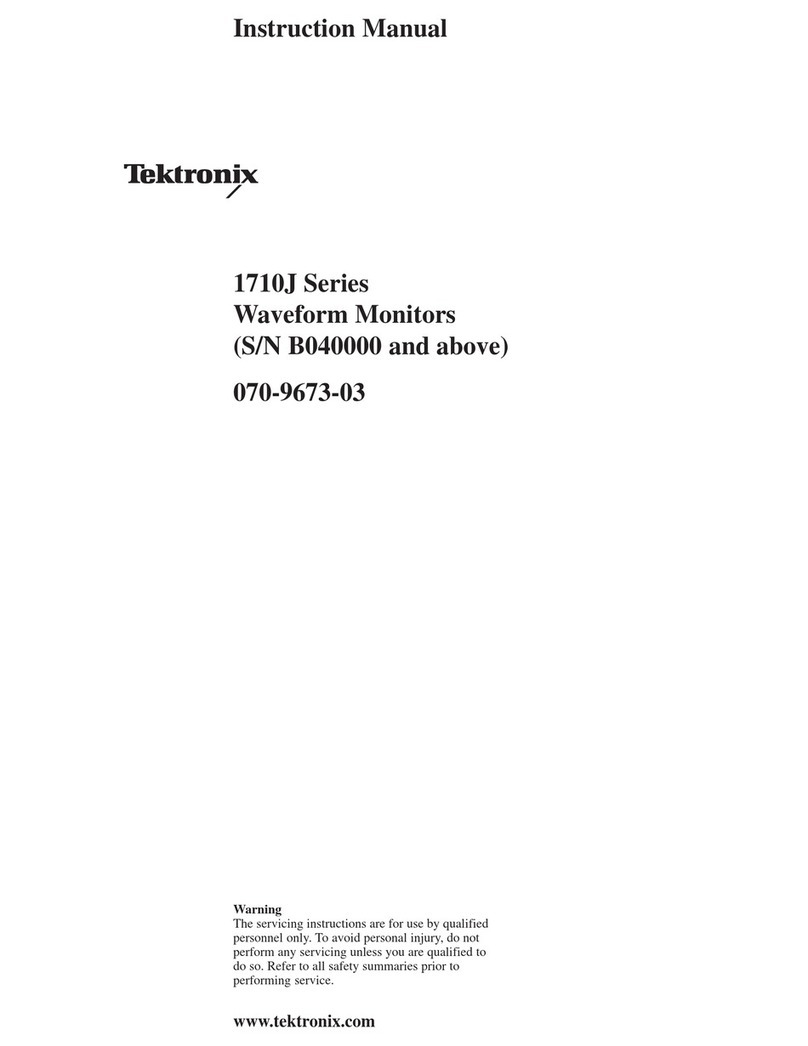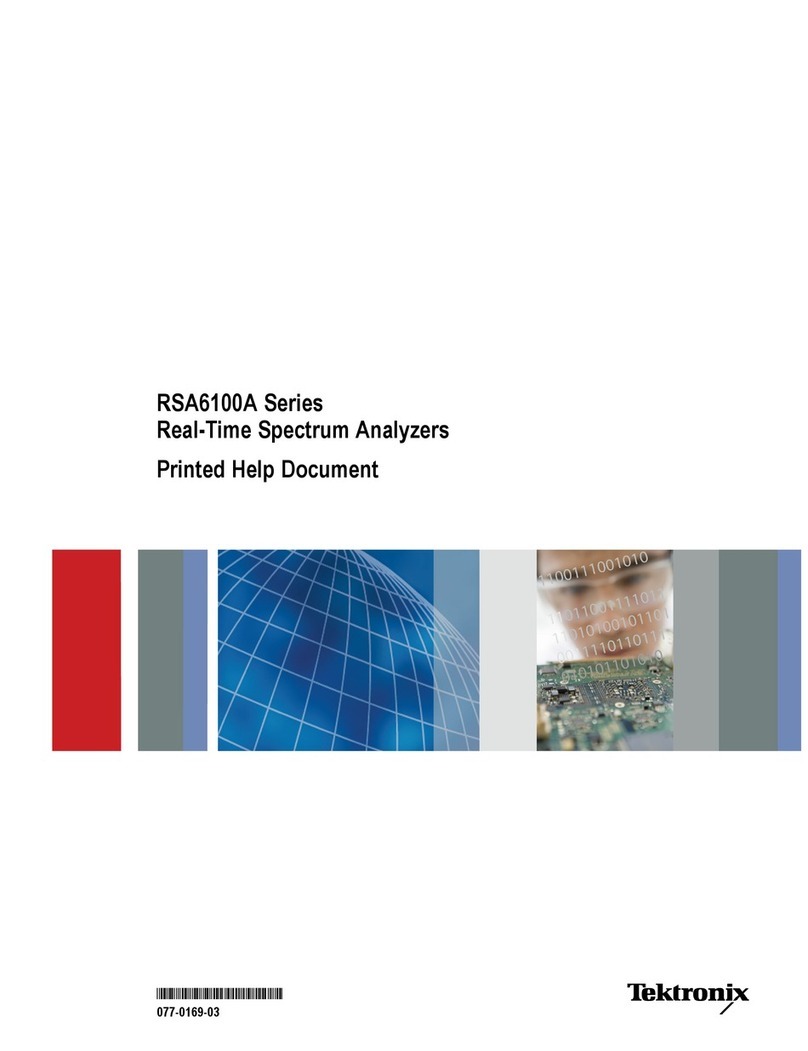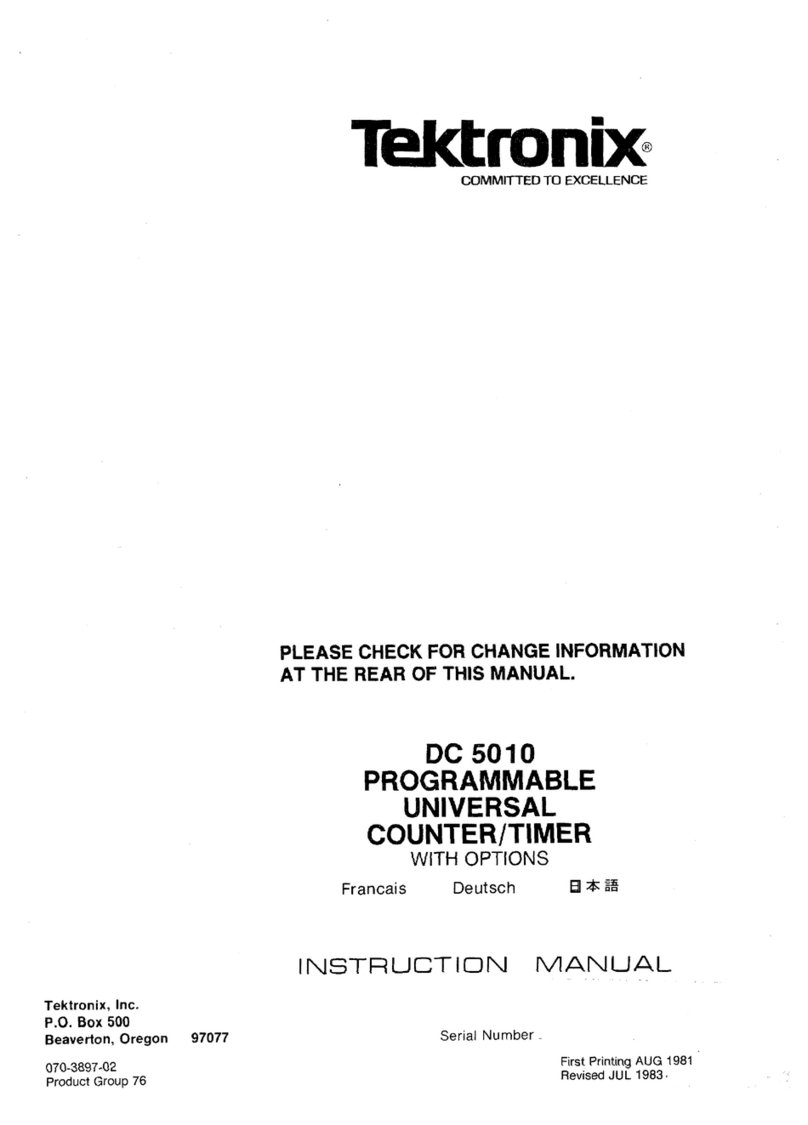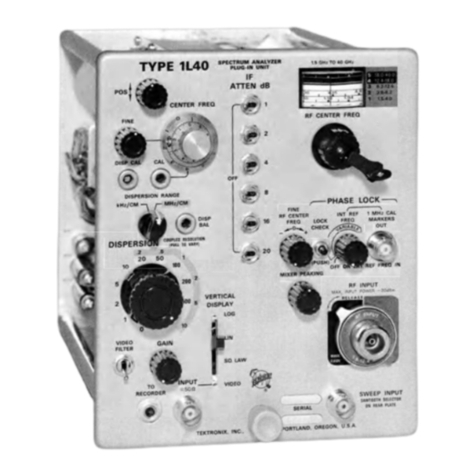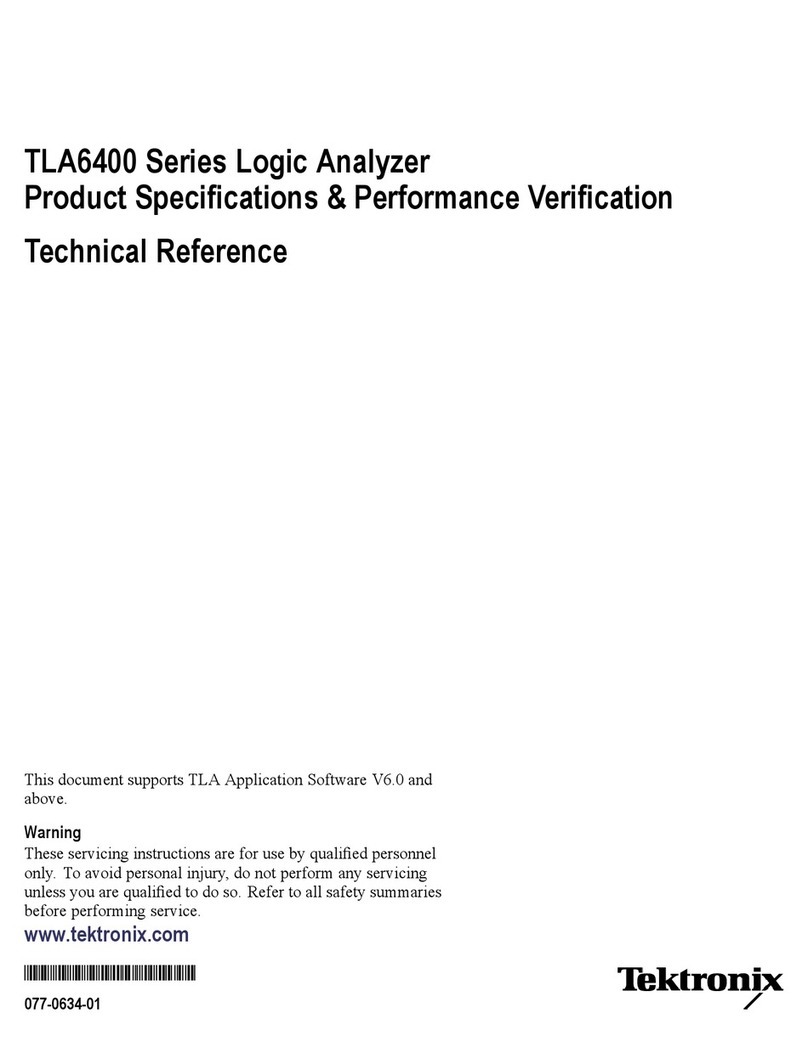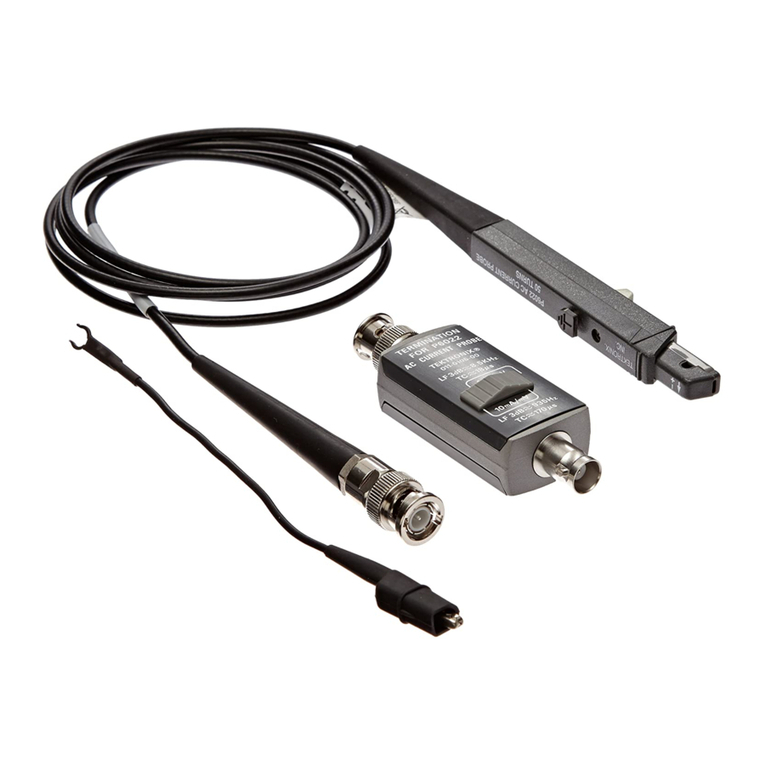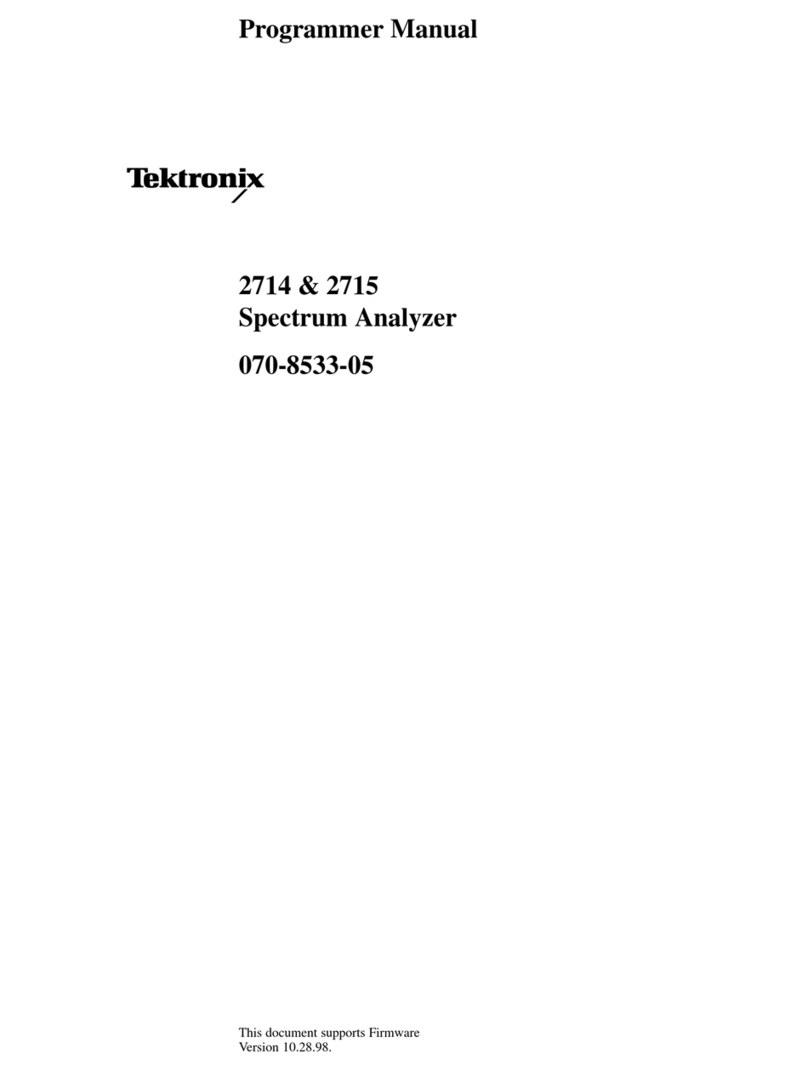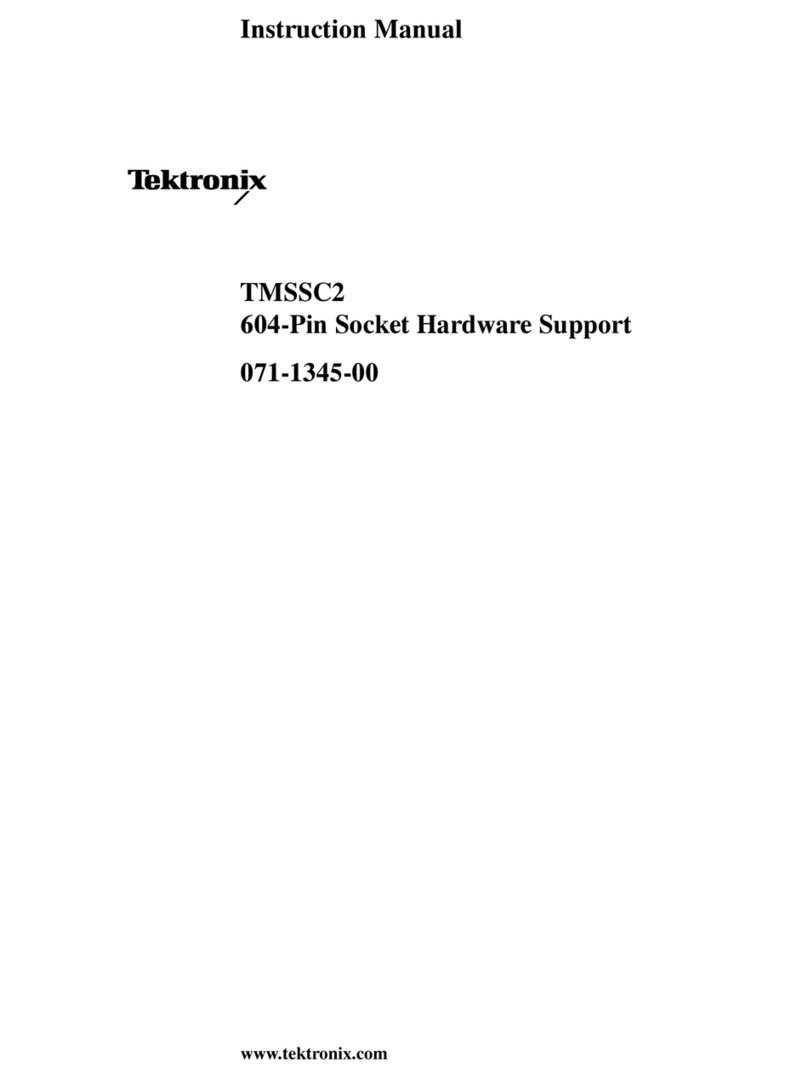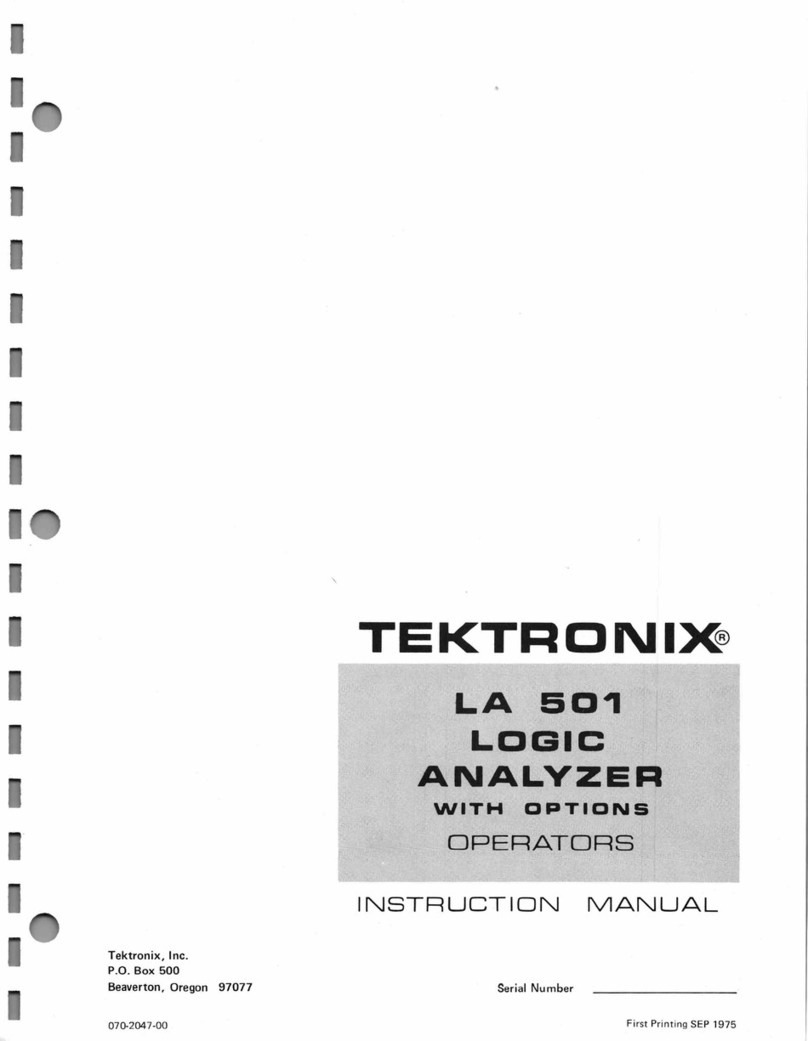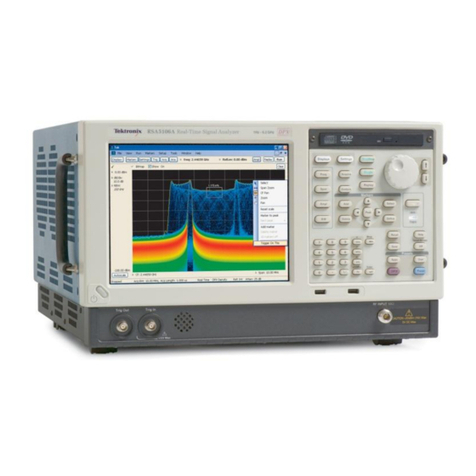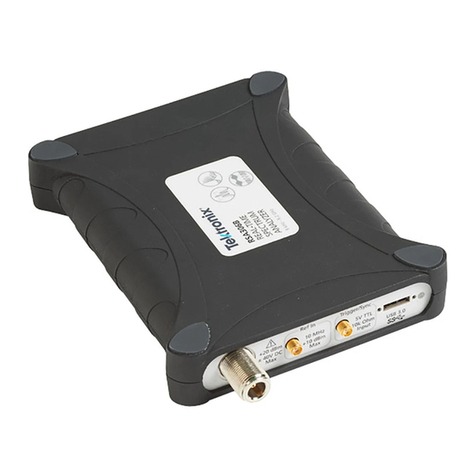
1. To install the probe, slide theprobebodyinto the
FlexChannel or VPI receptacle. The probeclicks into
place when fully engaged.
2. Attachone of the followingprobecables to the SMA
connector on theprobebody:
SMA-to-SMA standardcable (standardaccessory)
SMA-to-MMCX standardcable(standardaccessory)
SMA-to-MMCX high-temperature cable(optional
accessory)
1GHzbrowserprobecable (optional accessory)
CAUTION. To preventdamage to the probe, do not exceed
8 in-lbs torque on the SMAnut.
3. To disconnect the probe, press the latch release button and
pull away from the instrument.
Attaching MMCX accessories
Gently insert the MMCX end of the cableintoone of the
followingaccessories: micro-coaxtip, solderflex tip, u.fl
adapter or MMCX to squarepin Y-lead adapter, until you feel
the connector engage. To remove an accessory, gently pull
from the MMCXconnectionpoint.
Attaching solder-in accessories
Micro-coax tip.For convenientfirst-time use, the solder
micro-coax tips are shippedpre-trimmed and ready to be
soldered to the testpoint. You canreuse a tip by removing the
tip fromthe solder joint and then trimming the wire insulation
backtoexpose the center pin and ground shield on the tip cable.
To achieve the best measurements results with a trimmed tip,
refer to the TPR1000andTPR4000UserManualforguidelines
and a description of best practices.
Flex tip. To attach the solderflex tip,first solder the enameled
self-fluxingcopper wire (standardaccessory) to the testpoint.
Feedthe wire through the vias on the end of the flextip, and
thenapply a small amount of solder to the vias to attachthe
wire to thetip.
Using the solder-pin installation tool
The supplied set of solderpinsare intended to be installed
on DUTcircuitboards and usedwiththe supplied
MMCX-to-square-pinadapter. To install the solder pins,use
the supplied soldering-aide tool as describedbelow .
NOTE.The solder pins are extremely small andcan be
challenging to handle. It is recommended to use tweezers and a
magnifying tool when installingpins on a circuit board.
1. Carefully insertthe solderpins into the soldering aide tool
as shown below.
2. Use the soldering aide tool to hold the solder pins in place
while soldering the pins to the circuitboard.
3. If necessary, apply a small amount of adhesive to further
strengthen the connection to the circuit board. However,
keeptheheight of the adhesive to a minimum to provide
goodelectricalcontact for the adapter.
Optional high-temperatureaccessorykit
If youordered the optional TPR4KITHT high-temperature
accessorykit,youreceivedthe following items:
noitpircseDmetI
2 m high-temperature cable, SMA
male-to-MMCX male, 50 Ω
Solder-in cable adapter, MMCX
female-to-solder micro-coax tip, 50 Ω,
set of 3
Solder-in cable adapter, MMCX
female-to-solderflex-paddle tip, 50Ω,
set of 3
Optional 1 GHz browseraccessory kit
If youordered the optional TPRBRWSR1G browser accessory
kit, youreceivedthe following items:
noitpircseDmetI
Browser
Ground leads (blade, 0.5 mm spring,
15 cm alligator)
Y-lead adapter, browser tip-to-0.8 mm
sockets
Micro-SMD clip
Replacement 0.5 mm browser tips
(2 solid tips, 2 spring tips)
Optional solder-in, micro-coax tip accessory kit
If youordered the optional TPR4SIACOAX accessorykit,you
received the following items:
noitpircseDmetI
Solder-in cable adapter, MMCX
female-to-solder micro-coax tip, 50 Ω,
set of 3
Optional solder-in, flex-paddle tip accessory kit
If youordered the optional TPR4SIAFLEXaccessorykit, you
received the following items:
noitpircseDmetI
Solder-in cable adapter, MMCX
female-to-solderflex-paddle tip, 50Ω,
set of 3
Installation
NOTE. Your FlexChannel or VPI instrumentmay require a
software upgrade to support full functionality of the TPR1000
andTPR4000 probes. Before you connectthe probe to an
oscilloscope, refer to the required software versionstable at the
endof this document to checkthe version requirements.
Copyright © Tektronix, Inc. All rights reserved.
Usingtheoptional1GHzbrowser
Theoptional 1 GHzbrowserkitcontains the following parts:
1 GHz browserprobe, square pin Y-leadadapter, micro-SMD
clip, threegroundleads (alligator, blade, spring), and four
replacement probe-tippins (two rigid, two spring loaded).
WARNING.To prevent injury to the operator or damage
to the probe,oscilloscope and deviceunder test, do not
touch the probe groundtoanypoint that is not at the same
potential as the chassis ground of theoscilloscope. The
probe ground must be connected to the samepotential as
the chassis ground of the oscilloscope.
Installing ground leads. To obtain accurate measurements,
alwaysattach a ground lead to the probe tip beforemaking
measurements. It is recommended thatyou use the shortest
groundleadthatwillfunction in your electrical application.The
following illustration showsthebrowserprobe tip, the tip cover
and the three types of grounds leads supplied with the browser.
To install the ground leads:
Spring: Slide the groundleadover the probetipuntil it
seats aroundthe metalportion of the probe-tiphousing.
Alligator: Slide the ground leadprongsover the exposed
metal between the plasticprobe-tipsections.
Blade:Locatethe slot in the probe-tiphousing as shown
below. Slide the groundleadovertheprobetipuntil the
blade slides into the slot.
Connecting the Y-lead adapter and micro-SMD clip. The browser
kit includes a Y-leadadapter and a micro-SMD clip thatconnect
as shownbelow. The Y-leadadapter can alsoconnecttosquare
pins.
Replacing browser-tip pins. To removethebrowser-tip pin,use
pliers to grasp the pin and gently pullitout of thetiphousing.
To install a new browser-tip pin, select between a solid (silver
colored)orspring-loaded(gold colored)pin, and thenuse pliers
to gently insertthepininto the browser-tiphousinguntil you
feel the pin press against the bottom of the housing.
Required oscilloscope software versions
OscilloscopeRequired software version 1
5 and 6 Series MSO 1.12.5
MSO/DPO3000 1.27462
MDO/DPO4000 1.09354
MDO/DPO5000 10.8.3.3
DPO7000 10.8.3.3
DPO70000 10.9.1
1Theprobemayoperate with olderversions of oscilloscopesoftware. However,
older softwareversionsthan thoselisted arenotguaranteedtoprovide full
probefunctionality.
www.tek.com
